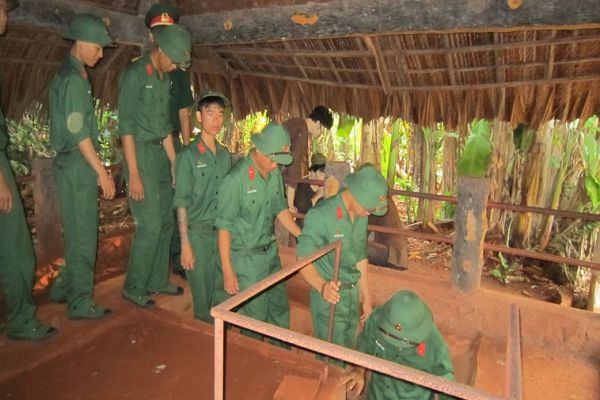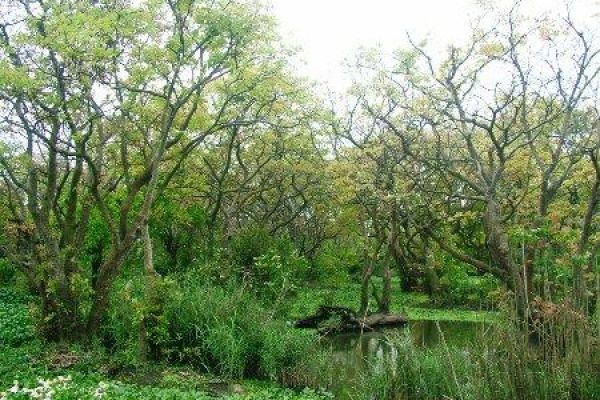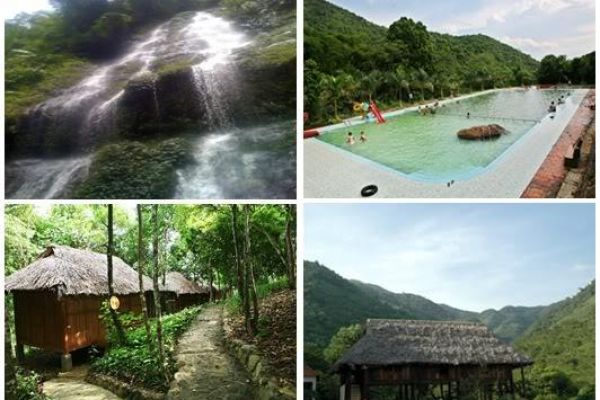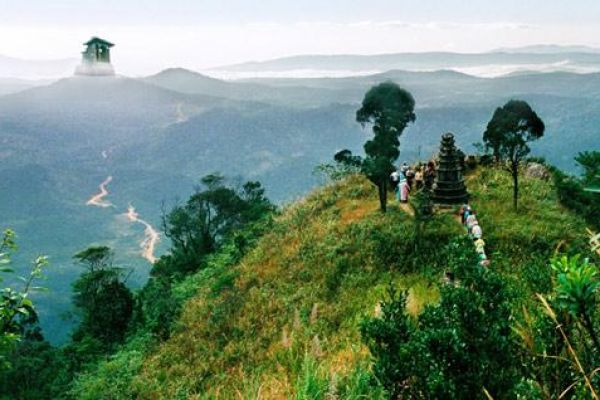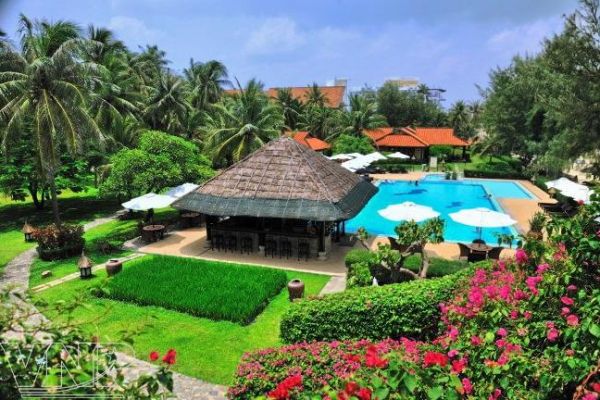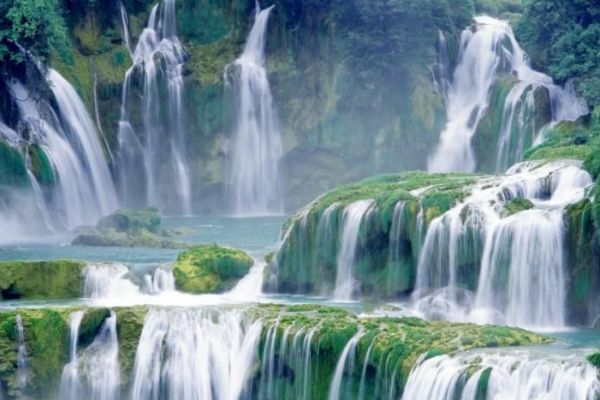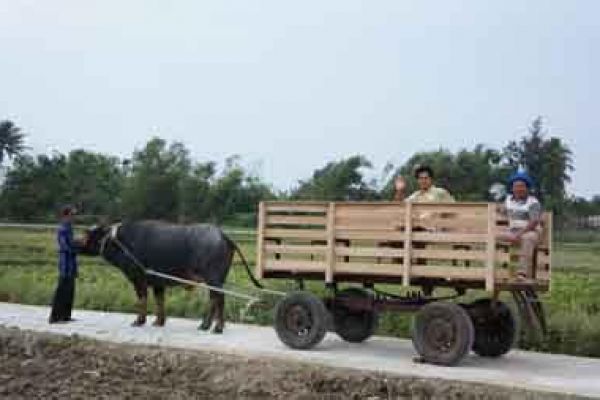
Hoi An
Located in central Quang Nam province, Hoi An was ranked first in the world’s top 10 favourite cities by Wanderlust, a well-known British tourism magazine, on January 31, 2013. It beat Cusco city in Peru, Kyoto in Japan, Copenhagen in Denmark, Italy ’s Venice, and even New York and San Francisco in the US .
An attractive ancient town
Hoi An is located on the northern bank of the basin of the Thu Bon River, 25 km southeast of Da Nang city and 50 km northeast of Tam Ky city in Quang Nam province.
It lies in a coastal estuary area, where big rivers, including Thu Bon, Vu Gia, Truong Giang and De Vong, meet before flowing into the East Sea through Cua Dai estuary.
Thanks to these rivers, people from Hoi An can go upstream on the Thu Bon River to Dien Ban, Duy Xuyen, Que Son and Dai Loc districts or downstream on the Truong Giang River to Thang Binh, Tam Ky and Chu Lai districts. From Cua Dai estuary, people can reach all regions in the country and the world by sea.
There are not many places rich in relics like Hoi An. It has more than 1,350 relics, including 1,273 civil architectures (houses, bridges, wells and markets), religious architectures (pagodas, temples and family houses of worship) and specific architectures (such as tombs).
Each type of architecture contains particular features, contributing to Hoi An’s cultural diversity. Of which, its architecture complex is considered a “live museum” as the residents of Hoi An have “lived in the town, lived with the town, and lived for the town” for generations. Their daily lives go on within the ancient town; each piece of architecture is imprinted with the residents’ particular lifestyle and culture.
Hoi An is inhabited by people from various strata, origins and ethnic groups. It is from where Catholicism and Buddhism spread in southern Vietnam , one of the two birthplaces of Vietnamese script in the 17 th century (the other is Hanoi ), and the crossroads for Champa-Vietnamese-Chinese-Japanese-Indian civilisations and western countries.
Cultural features of different origins have formed unique aspects of Hoi An’s intangible cultural treasures. The main stream is the system of customs and faiths of Vietnamese and Chinese-Vietnamese communities.
Traditional festivals take place around the year in Hoi An, such as fishermen festivals like the Cau Ngu (praying for a good fishing harvest) festival, the whale worshipping festival, boat races, and festivals to worship the ancestors of carpentry, tailoring and pottery.
In recent years, modern festivals together with cultural and tourism events, and big ceremonies have attracted a large number of local residents and tourists.
Heroic tradition
Besides distinctive historical and cultural features, Hoi An also owns rich traditions of patriotism and revolution.
It is the homeland of Nguyen Duy Hieu – leader of “Nghia Hoi Quang Nam ” – and the glorious uprising against French colonialists from 1885 to 1888, as well as a number of patriotic scholars including Tran Trung Tri, Luong Nhu Bich in Cam Pho village, Nguyen Binh in Son Pho village, and Chau Thuong Van in Minh Huong village.
Following the Can Vuong (Aid the King) Movement (1885-1889), revolutionary movements associated with the names of Phan Chau Trinh, Huynh Thuc Khang, Tran Quy Cap and Phan Boi Chau broke out.
Hoi An was the centre of patriotic movements at that time and the location of secret meetings between patriots from the south and the north of Vietnam . It was the key location of the anti-tax movement in 1908 and the uprising led by Thai Phien and Tran Cao Van in 1916.
In October, 1927, the Vietnam Revolutionary Youth League was established in Hoi An. It was also the birthplace of the Quang Nam temporary provincial Party Committee, which was founded on March 28, 1930, and the location of the provincial People’s Committee.
Hoi An’s first Communist Party cell, set up in April, 1930, guided the people’s revolutionary struggles. On August 18, 1945, the uprising in Hoi An was victorious, and made it one of the first four localities to gain authority control during the August Revolution.
In the resistance wars, the struggles of the town’s army men and people grew strongly and achieved resounding success.
Thanks to its outstanding development achievements and the preservation of its heritage values and revolutionary tradition, the State presented Hoi An a number of noble titles, including Hero of the People’s Armed Forces and Labour Hero of the Renewal Period.
Upholding the values
The ancient town was recognised as a World Cultural Heritage by UNESCO on December 4, 1999, and presented four awards in heritage management, protection and promotion. In May, 2009, the Cu Lao Cham islands’ ecosystem was officially added to the list of the World’s Biosphere Reserves.
To uphold its values, the ancient town has taken audacious measures. It has banned motorbikes and the use of electricity during certain hours. It has provided free wi-fi service across the locality. These make Hoi An’s rhythm of life “slower” but more colourful, attracting greater numbers of tourists, especially from abroad.
Tours for visitors to experience farmers’ life and discover the Cu Lao Cham Biosphere Reserves and nipa forests are also available. In addition, the town has organised cultural events like Vietnam-Japan cultural exchanges, international choruses and heritage journeys, drawing the participation of representatives from various countries and popularising Hoi An to the world.
Thanks to its continuous efforts, Hoi An welcomed 1,375,000 visitors last year. The town’s Cu Lao Cham recorded a year-on-year increase of 41 percent in visitor numbers (97,000), demonstrating that it was the right decision to develop other types of tourism, such as sea and islands tourism.
Chairman of Hoi An People’s Committee Le Van Giang said that it is the city’s honour to possess a World Cultural Heritage. Hoi An has always tried its hardest to create a comfortable atmosphere for tourists.
Winning “The world’s most favourite city” title is a honour and also a challenge for the city. Hoi An will continue its efforts to promote its heritage and maintain its position as a leading and attractive draw to both domestic and foreign tourists, he added
Vietnam+

